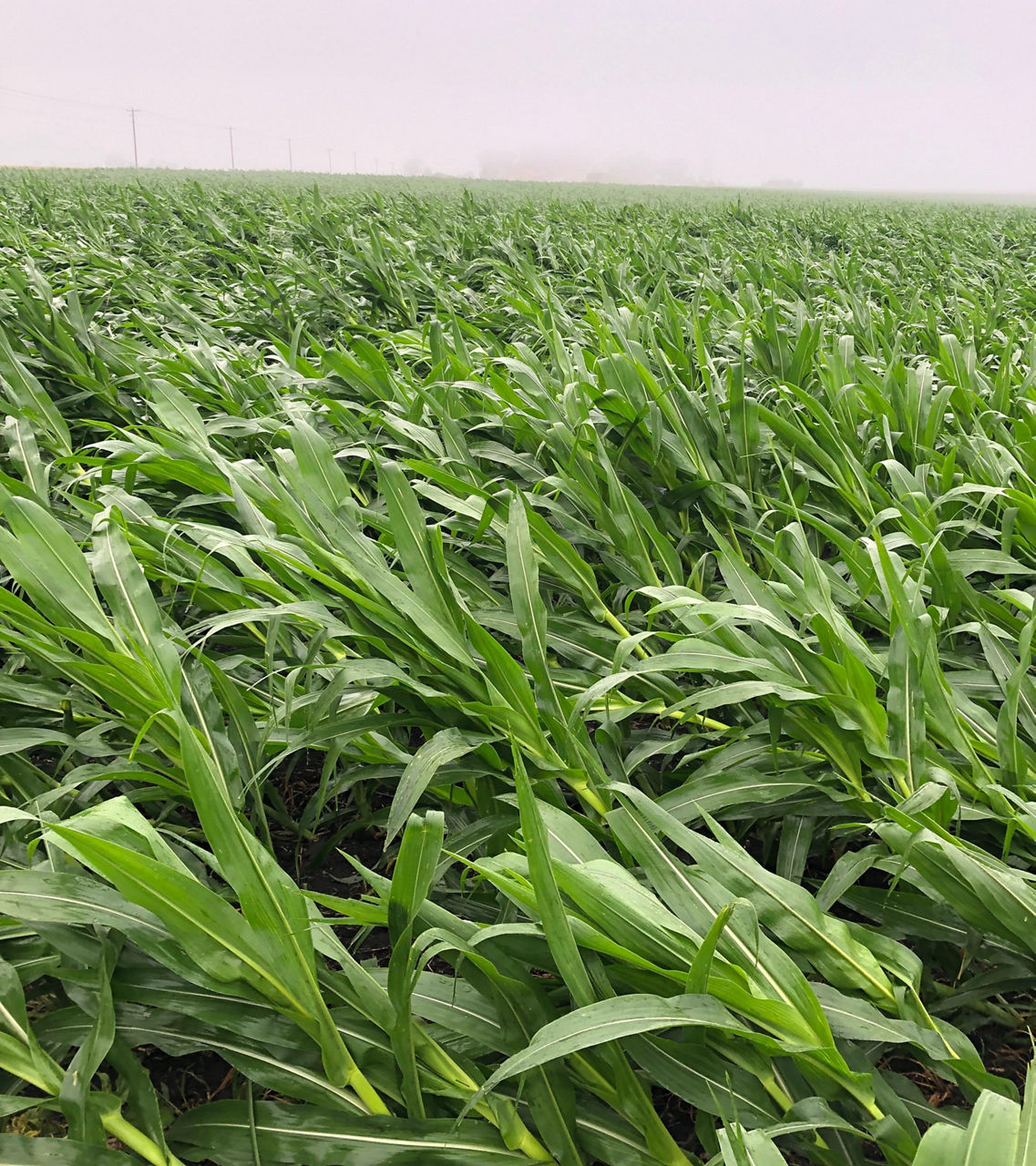5 MIN READ
Corn Rootworm Management for Fields with Severe Late-Season Lodging as a Result of Wind and Storm Damage
December 14, 2023
- Severe corn lodging and structural damage occurs almost every year in some areas of the country.
- Management options need to be reviewed for severely damaged fields, including whether or not to harvest the existing crop and what can be done during the next production season.
- One major management concern that must be addressed will be how to control the corn rootworm complex, especially if damage to the field disrupted the season’s scouting.
I plan on planting soybean in the damaged fields next season. Should I be concerned about corn rootworms?
Planting the field to soybean will help control any corn rootworm larvae hatched the following season. However, volunteer corn will likely be quite common in these fields in the upcoming season. Management steps should be taken to limit the volunteer corn as much as possible, as it can serve as a host for developing larvae and can be attractive to corn rootworm adults in the late summer. For more information on managing volunteer corn, see Managing Volunteer Corn in Soybeans.

I plan on planting the damaged fields to corn next season, but I don’t have adult beetle counts from before the storm and I don’t plan on taking any before harvest. What are my options?
If the adult corn rootworm population is unknown and corn is to be planted in the field, consider selecting a corn product with below-ground insect traits for the control of corn rootworm. For example, corn products that contain SmartStax® Technology, SmartStax® PRO Technology, and VT4PRO Technology to help control corn rootworm. If selecting a corn product without below-ground traits, consider applying an insecticide at planting that is labeled to control corn rootworm and apply it at the full labeled rate.
I am considering planting winter wheat or a cover crop of winter rye. What is the potential for corn rootworm injury to either of those crops?
None. Corn is the only agronomic host, so planting either of these crops will not result in injury.
I don’t plan on harvesting the crop and will use tillage to incorporate the residue. Will the tillage have an impact on the corn rootworm eggs in the soil?
Tillage will not have any impact on egg survival.
I am considering applying an insecticide to the field to kill the adults I see still feeding on the silks. Will this reduce the risk of injury if I plant corn next year?
Applying insecticide is unlikely to influence next year’s population, as females may have already deposited eggs at this point in the season.
If I plant corn next year, can I use larval sampling next year to determine if I have a damaging population of corn rootworms?
In some situations, larval sampling can be used to determine the potential for economic injury with a working threshold of two or more larvae per plant based on a 10-plant sample per field. However, applying insecticide once larvae have reached the economic injury threshold is considered a rescue treatment. By the time the insecticide is applied (either at lay-by cultivation or through overhead irrigation) and reaches the target zone, significant injury may have already occurred.
I did not observe any corn rootworm adults in my damaged corn field prior to the storm. Will they move into the field and lay eggs now, resulting in injury next year?
If adults were not found in the field before the storm, the silks had browned, and the silks had begun to dry down it is unlikely that the corn would be attractive to egg-laying females now, as these females prefer green silks. However, if your field was planted later, a later maturity product was used, and the silks are still somewhat green after the storm then the field may attract egg-laying females.
1219_73136